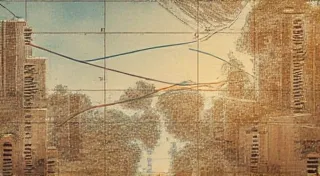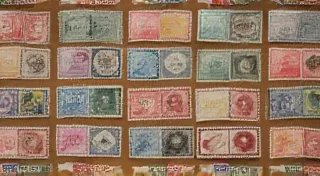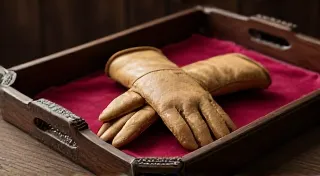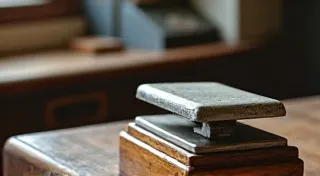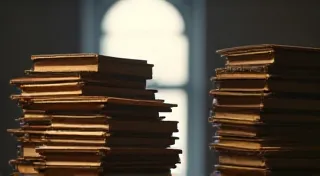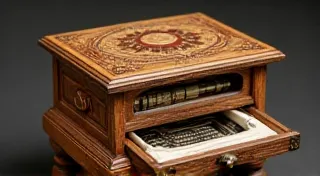The History of Typewriters and Their Use
Welcome to a journey through the fascinating world of typewriters – a technology that fundamentally reshaped communication, literature, and the very landscape of the modern office. More than just office equipment, the typewriter represents a pivotal moment in history, bridging the gap between handwritten manuscripts and the digital age. This website explores the rich history of these remarkable machines, tracing their evolution and examining their enduring cultural and social impact. From their clunky beginnings to their role in shaping literary movements, we delve into the stories etched into metal and ink. This is also a celebration of vintage technology, appreciating the ingenuity and craftsmanship of a bygone era.
Before the ease of word processors and email, the typewriter reigned supreme. It offered a level of legibility and uniformity previously unattainable, revolutionizing business correspondence and personal communication. But its influence extended far beyond mere practicality. The rhythmic clatter of keys, the tangible nature of the typed word, and the inherent limitations of the machine itself sparked creativity and influenced artistic expression. Join us as we uncover the stories behind the machines, from the inventors who dared to dream to the writers and secretaries who embraced them. Many of these machines are now highly sought after as collectible typewriters, cherished for their historical significance and aesthetic appeal.
The Dawn of Mechanical Prose
The story begins long before the sleek, electric models we might picture. Early attempts at mechanical writing devices date back centuries, but it wasn’t until the 19th century that viable models began to emerge. "Dust & Diagrams: Patents, Prototypes, and the Birth of the Modern Typewriter" explores this crucial period, revealing the ingenious innovations and frustrating dead ends that paved the way for the machines that would change the world. Consider the challenges faced by these pioneers, wrestling with gears, levers, and the fundamental problem of translating thought into a series of mechanical actions.
Christopher Latham Sholes and Carlos Glidden’s design, often considered the first commercially successful typewriter, represented a significant leap forward. However, it was far from perfect. The infamous QWERTY keyboard layout, often cited as an example of inefficient design, was actually a deliberate attempt to slow down typing speed and prevent the type bars from jamming – a testament to the inherent limitations that drove early innovation. "The Keys of Constraint: How Mechanical Limitations Sparked Innovation" unpacks this fascinating story, showing how restrictions often lead to inventive solutions. Many early models are now treasured as valuable collectible typewriters.
The Typewriter’s Impact on Literature and Society
The arrival of the typewriter had a profound effect on literature. Writers embraced the newfound ability to produce clean, legible manuscripts, free from the illegibility that often plagued handwritten works. The typewriter facilitated new approaches to storytelling, encouraged experimentation with form, and provided a sense of objectivity and distance that influenced literary styles. "The Poet’s Key: How Typewriters Influenced Literary Movements" examines this connection, revealing how the rhythmic clatter and visual uniformity of typed text found their way into the poetry and prose of the era. Furthermore, the typewriter fostered a connection between the writer and the reader, establishing a distinct sense of authorship and authority. The visual impact of the typed page also influenced literary aesthetics, as authors experimented with typography and layout to create visually striking and impactful narratives. The appeal of these machines as pieces of vintage technology is undeniable.
Imagine the satisfaction of a writer, no longer constrained by the idiosyncrasies of their own handwriting. The typewriter democratized the writing process, making it accessible to a wider range of individuals and fostering a new era of literary expression. Furthermore, "The Foundry’s Whisper: How Industrialization Forged the Voice of Writers" explores the broader industrial context. The rhythmic pulse of the typewriter became the soundtrack of a changing world, a symbol of progress and opportunity. The impact wasn’t limited to literary circles. "The Secretary’s Cipher: Typewriters, Business, and the Rise of Women in the Workplace" sheds light on the typewriter’s role in transforming the business world. As offices embraced the efficiency and legibility of typed documents, the demand for skilled typists soared.
The Sensory Experience of the Typewriter
Beyond its practical uses, the typewriter offered a unique sensory experience. The tactile feel of the keys, the satisfying *ding* of the carriage return, the faint aroma of ink and metal – all contributed to a distinct atmosphere. "The Typist’s Reverie: Solitude, Productivity, and the Mechanical Muse" explores the psychology of this interaction, delving into the state of focused creativity that many typists experienced. The distinct *clatter* is examined further in "Echoes in the Carriage Return: The Psychology of Typewriter Rhythm". The very sound of the machine also influenced literary aesthetics, as explored in "The Bell's Echo: Aural Landscapes of the Typewriter Era".
Preserving the Legacy of the Typewriter
Time takes its toll on all things, and typewriters are no exception. The delicate mechanisms, the fragile ribbons, the fading ink – all are vulnerable to the ravages of time. "Ribbons of Time: The Fading Colors of Typewriter History" investigates the science and history of typewriter ribbons, a critical (and often overlooked) component of these machines. "Ephemeral Inks: The Science and History of Typewriter Ribbons" underscores the fleeting nature of the typed word. "A Tapestry of Letters: The Art of Repairing and Restoring Typewriters" showcases the skill and dedication of those who work to keep these machines operational.
Unraveling the Mysteries of the Machine
Even the most well-maintained typewriters harbor secrets. "The Imprint of Absence: Deleted Keys and the Stories They Concealed" explores the intriguing mystery of missing or damaged keys, imagining the narratives they might have witnessed. "The Ghost in the Font: Typewriter Fonts and Their Literary Associations" investigates how the unique characteristics of typewriter fonts have influenced the visual and stylistic qualities of literature. The idea of memory is investigated in "The Ghosts of Letters: Typewriters and the Persistence of Memory".
The Typewriter’s Place in a Changing World
The transition from handwriting to typed prose was a profound shift in communication. "From Script to Steel: The Transition from Handwritten Documents to Typed Prose" explores this evolution. Furthermore, "The Unwritten Chapters: Lost Typewriter Stories and the Silence of Machines" touches on the unspoken narratives tied to these machines. "Steel and Sentiment: The Typewriter as a Portrait of an Era" further examines the cultural impact.
"Dust & Diagrams", "The Keys of Constraint", "The Poet’s Key", "The Foundry’s Whisper", "The Ghost in the Font", "The Ghosts of Letters", "The Imprint of Absence", "Ribbons of Time", "From Script to Steel", "The Secretary’s Cipher", "Steel and Sentiment", "A Tapestry of Letters", "The Typist’s Reverie", "The Unwritten Chapters"


